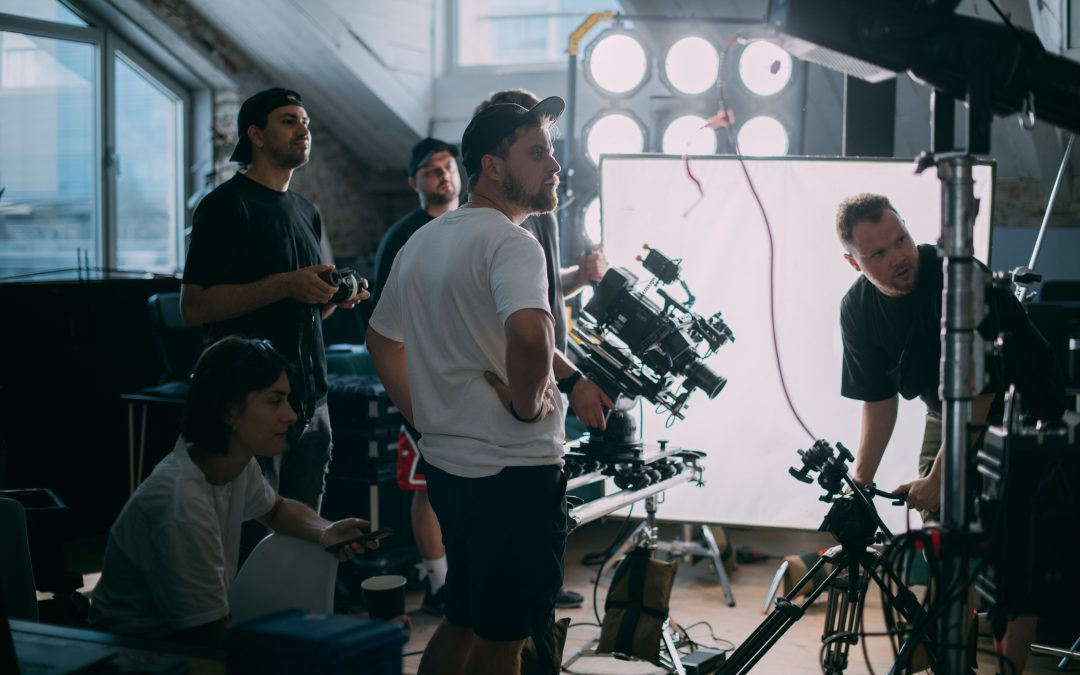Onkar Agarwal, Faculty of Filmmaking, Pearl Academy
We all enjoy watching movies, but how often do we truly appreciate the myriad of elements that influence our viewing experience? Films not only narrate stories but also provide a canvas for artistic expression. Beyond the storyline and dialogues, there are visual and auditory aspects that shape the overall meaning, mood, and artistic direction of a film, collectively known as film aesthetics. In the realm of cinema, various roles contribute to the creation of a compelling film. Directors envision the overall artistic direction, cinematographers capture the visual essence, sound designers create the auditory atmosphere, and editors piece together the narrative, ensuring seamless transitions and emotional resonance. Filmmaking is more than just technical skill; it involves skillfully crafting emotions, rhythms, and visual coherence that turn a screenplay into a captivating visual narrative, whether it’s a heartwarming romantic comedy or a thrilling suspenseful story. In this piece, we will discuss the “Invisible Art” in the world of filmmaking.
The World of Cinematography Altered
The journey of cinematography began in the late 19th century with the invention of motion picture cameras by pioneers like the Lumière brothers and Thomas Edison. The introduction of sound in the 1920s and color film in the 1930s revolutionized the industry, leading to classics like “The Wizard of Oz.” The mid-20th century brought portable cameras, enabling more dynamic cinematography, as seen in “Lawrence of Arabia.” The digital revolution further expanded possibilities with digital cameras and CGI. Today, cinematography combines traditional techniques with modern technology to create visually captivating films.
Technology’s greatest impact on filmmaking is perhaps most evident in the advancements of cameras, allowing cinematographers to shoot in higher definition and capture more intricate details in set design. This technological evolution has transformed the industry from silent, black-and-white films to high-definition movies that immerse audiences in the experience. A prime example is Ridley Scott’s 2023 film “Napoleon,” which showcases incredible visuals of landscapes, costumes, atmosphere, and characters. The film’s spectacular landscapes, dramatic storytelling, and intricate period details, coupled with innovative lighting, composition, and storytelling perspectives, make it a visual delight. The film’s historical setting and character-driven narrative add depth and authenticity, enhancing the overall viewing experience.
Editing Brings The Film Together
The significance of film editing as a distinct feature of the cinematic form is often overlooked. Film editing is a unique element of the cinematic medium. While writing, directing, and acting have been practiced in various forms by dramatists long before the advent of cinematography, the novelty of film editing brings finesse to these ancient storytelling techniques. The editor wields significant influence over the performances, the overall rhythm and pacing of the action, and to a considerable extent, the final structure or ‘shape’ of the film. Editors bear the responsibility for the ultimate version of the film, the script. And if we are talking about magic on screen, the true allure of cinema is found in the captivating fusion of images. These images have the power to transcend the limitations of theatrical dialogue and create an instantaneous impact.
Evolution of Filmmaking
In the early days of filmmaking, editing predominantly occurred through physical manipulation of the film reels after shooting, rather than in post-production as we understand it today. This process involved cutting and splicing film strips to arrange shots in a desired sequence, a technique that required precision and attention to detail. Visual effects were similarly achieved through practical means, meticulously crafted to seamlessly blend with the filmed content. In today’s technologically driven world, Virtual Reality and Augmented Reality have significantly transformed the art of storytelling in film.
Currently, filmmakers are beginning to explore the potential of immersive storytelling with emerging technologies. Early-stage AI-powered editing software is being adopted, showing promise in automating tasks like color grading and audio syncing, which were previously time-consuming. Additionally, there’s an increasing trend of integrating digital effects directly into shots within the same program or suite of programs, marking the initial steps in leveraging technology for more efficient filmmaking processes.
Editing isn’t just about connecting scenes; it’s about bringing a story to life in the most captivating and emotionally powerful way. It’s making the unseen art of editing a key player in the world of cinema.
By combining theoretical knowledge with practical application, the film courses at Pearl Academy ensure that students are well-prepared to embrace the future of film technology and contribute to the evolving realm of remote filmmaking. The focus is on embracing cutting-edge technologies like Unreal Engine, a game-engine powerhouse, that form our curriculum’s backbone, enabling students to unlock entirely new dimensions of filmmaking. The course also places a strong emphasis on the business aspects of online filmmaking, giving students the knowledge and skills required to navigate the rapidly changing landscape of digital distribution and monetisation models.
To learn more about the courses, click here. You can also read more to get a fair understanding of cinematic art and pursue your journey in the realm of storytelling.












